Lawn Questions of the Season
I’m dedicating this popular page of e-gardens this week entirely to turf. Lawn questions, after all, make up 32 percent of the questions I’ve been asked historically on my radio programs. (I keep copious logs.)
These are the questions that come up each October. I hope they’re of help to you.
1. “Can I leave tree leaves on the grass to protect the lawn from winter’s cold?”
You should not leave fallen leaves on the grass for more than a couple of days. They retain soil moisture and warmth, and those can lead to diseases that don’t need to appear. Mulch the leaves with your mower and collect them with the bag. Use them in the compost or put them beneath shrubs as a natural mulch. Do not send them to the landfill!
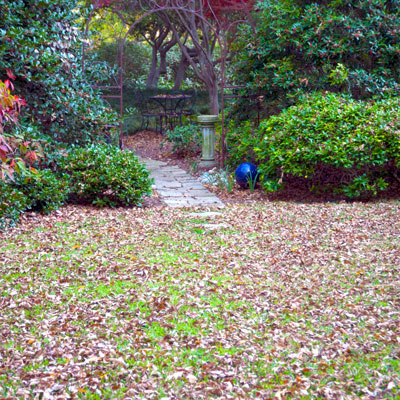
Photo: pecan leaves have already started dropping around the Sperry landscape. I try not to let them accumulate on our grass. (photo from late October 2015)
2. “Why are there round, dead spots every fall in my St. Augustine lawn?”
That’s a fungal disease known as brown patch. It attacks the blades of the grass. If you pull on them, they will come loose easily. You’ll see the decayed areas where the blades attach to the runners. What can you do to stop it? Water the lawn only in the morning. Brown patch spreads on wet grass blades, so night watering encourages it. And, most of all, apply a labeled turf fungicide as soon as you see the spots starting to develop. Your local retail nursery will have several options. National chain stores frequently do not.
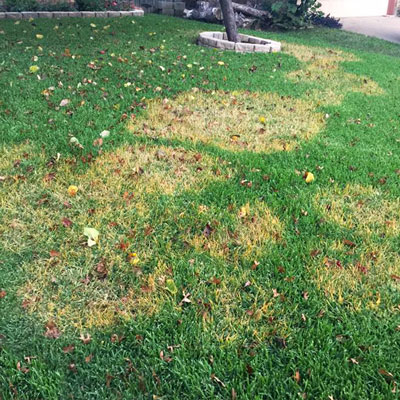
Photo: Brown patch quickly becomes obvious in St. Augustine turf in the fall. Take measures to stop it immediately.
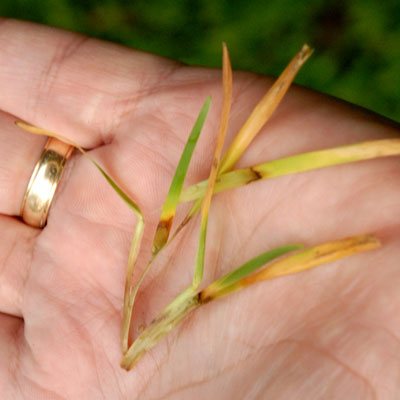
Photo: Brown patch fungus shows up at the bases of the leaves. You can see where they were afflicted. They will pull loose from runners quite easily.
3. “Is it too late to start new grass to cover bare spots?”
October, even early in the month, is definitely too late to plant new St. Augustine unless you’re in Deep South Texas. Bermuda sod is better able to withstand really cold winter weather in Central and North Texas. However, the safest option, if it’s available to you, would be to wait until April. In the meantime, you can sow ryegrass as a temporary winter cover for bare soil where you might be tracking mud.
4. “Should I mow my lawn higher until frost, to help insulate it for the winter?”
No. Tall grass quickly weakens. You’ll have more weeds than ever, plus you won’t be doing a thing to help with winter hardiness. Mow at the same height all year, summer and winter.
5. “What is the wiry little weed with light lavender/white flowers?”
That’s roadside aster. It’s basically a weed of neglect. It shows up when our lawns don’t get enough water or fertilizer (or both), and you’ll most commonly see it out by the curb, behind the rear fence, or in lawns that have essentially been ignored all summer. You could apply a broadleafed weedkiller to it in late summer or fall, but your better control measure would be to ramp up the care you give the lawn through the growing season. Healthy turfgrass will crowd out roadside asters.
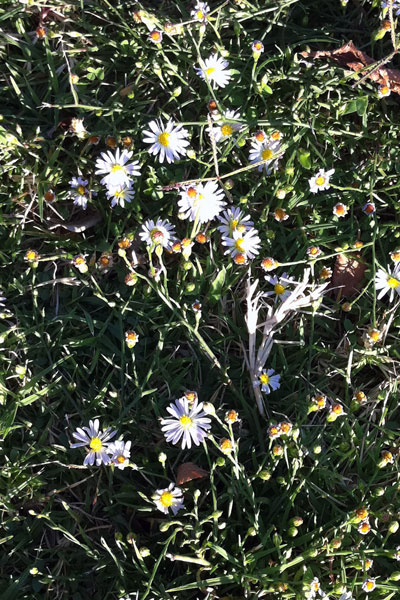
Photo: Roadside aster is one of the common sights of fall lawn care. You can spray it, but you can also encourage your turfgrass to crowd it out.
6. “I’m finding grub worms in my lawn when I dig to plant trees and shrubs. Should I treat now?”
Probably not. Grubs have essentially done whatever damage they will do to lawns and landscapes by now. They’re about to go deeper into the soil and then start the process of transforming into the next generation of June beetles. Also note that many gardeners become anxious when they see a few grubs while they’re preparing fairly large beds or digging large holes for new trees. The population threshold where grubs will do measureable damage is somewhere around 4 to 5 grubs per square. Odds are that your numbers don’t even come close to that level.
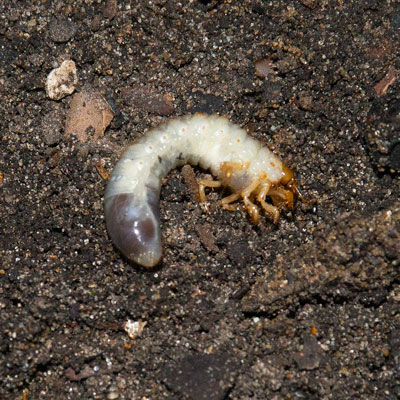
White grub worms, the larval forms of June beetles, may be present in your lawn now. They are always C-shaped. They have legs and brown heads. While concerning, populations are really sufficient to cause real concern.
